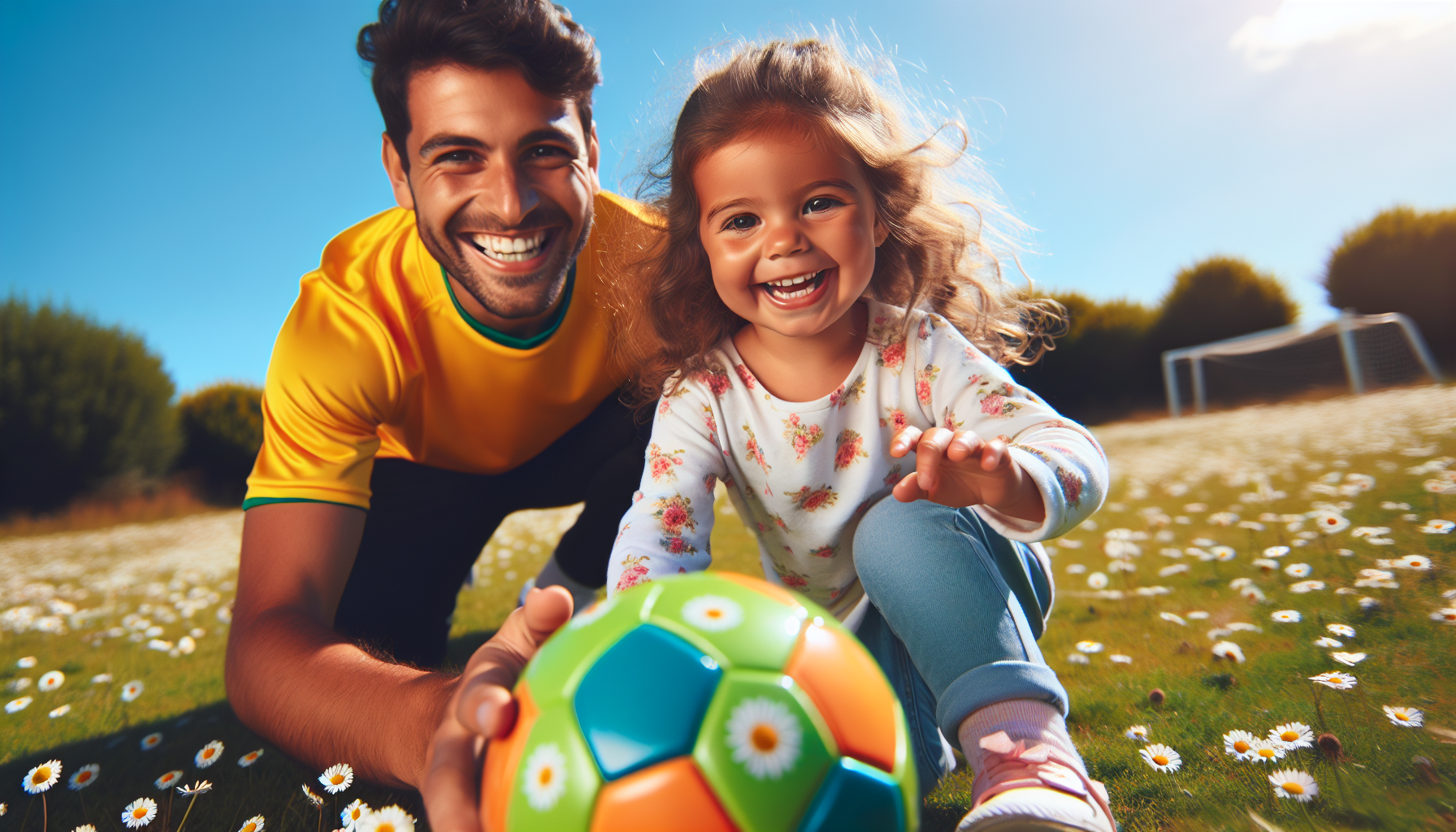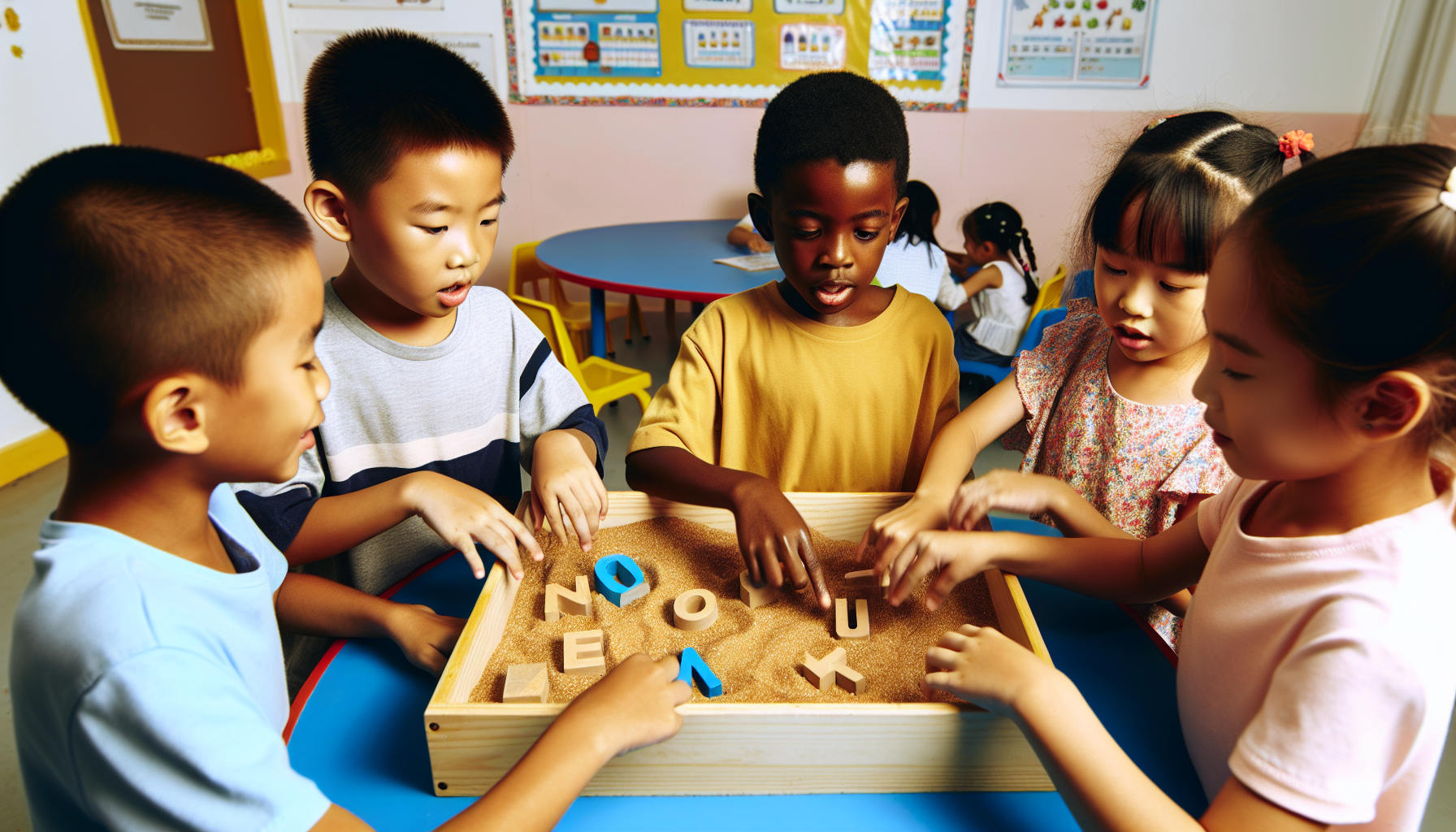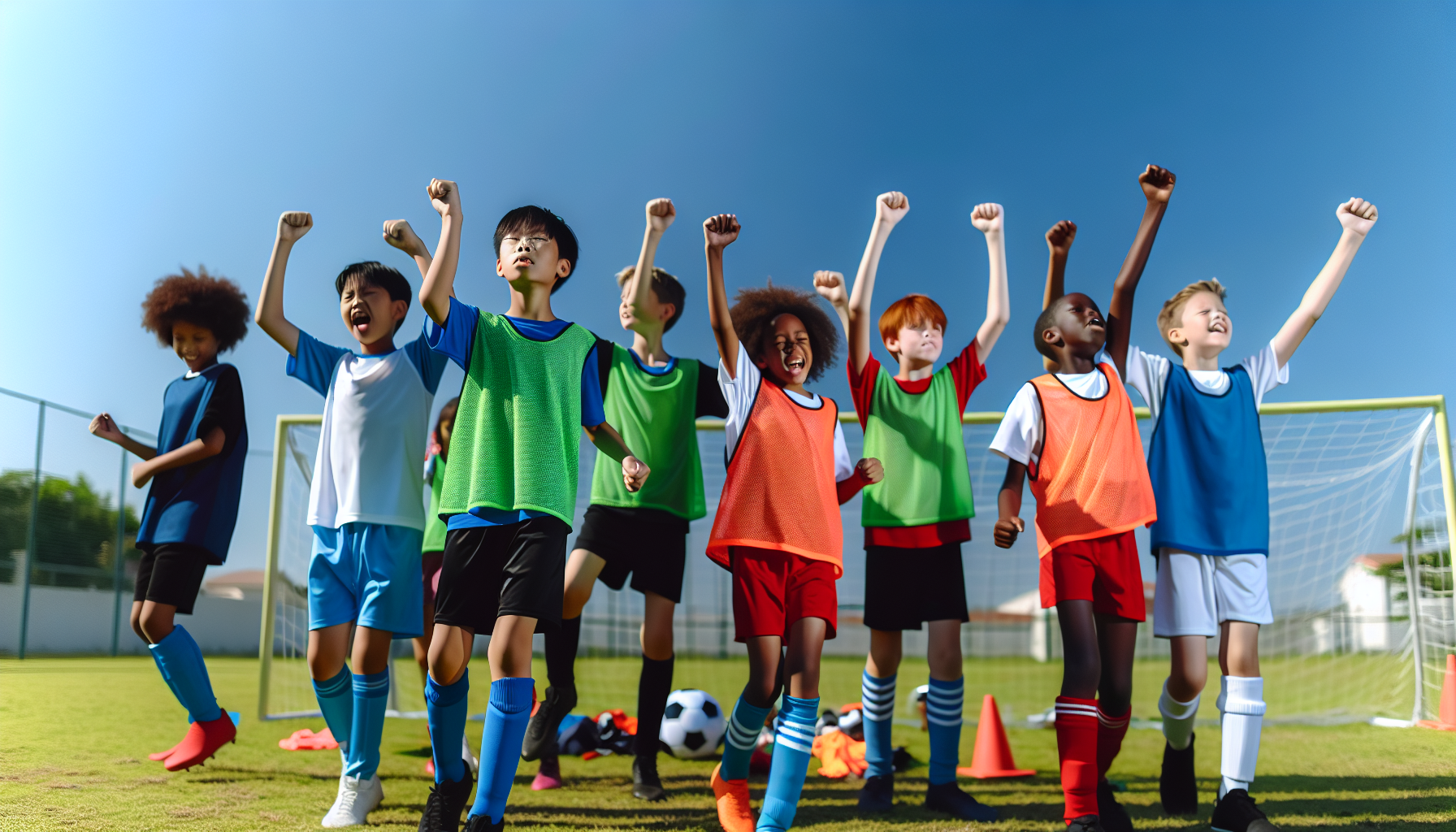Are you in search of an activity for preschool that blends fun and learning? You’ll find our top picks to spur your little ones’ curiosity and growth. From hands-on literacy games to inventive math concepts and creative science discoveries, get ready to enrich your preschoolers’ day with our dynamic selection. Key Takeaways Incorporating hands-on activities in preschool education, along with physical activities for youth, enhances children’s learning experiences. This combination improves literacy, creativity, numeracy, and scientific inquiry, fostering a holistic approach to early development. Creative arts like finger painting, making collages and incorporating nature into art foster self-expression.
Table of Contents
ToggleKey Takeaways
- Make sure to kick off PE classes with energizing warm-ups like the Jumping Jack PE Game, as they prepare students mentally and physically for the activities ahead, enhance coordination, and build enthusiasm.
- Get creative with obstacle courses and classic games by adding unique tweaks that ensure safety, boost engagement, and teach valuable skills like teamwork, coordination, and strategic thinking.
- Use varying exercises during circuit training and finish with cool-downs and reflection to ensure students of all fitness levels are engaged, prevent post-exercise issues, and discuss what they’ve learned.
PE Exercises! Energizing Warm-Up Routines
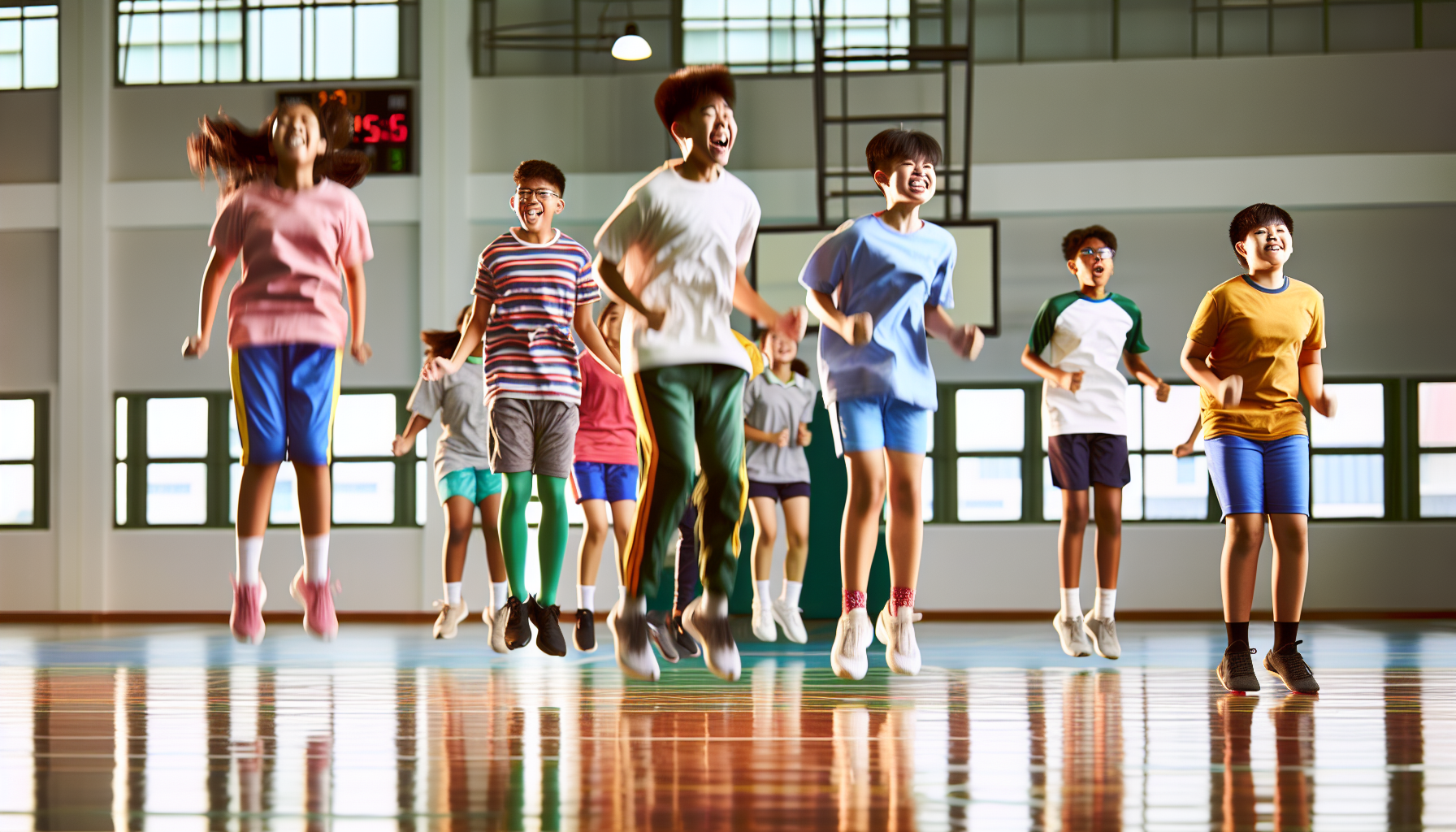
Warm-ups are indispensable before any physical education class. But why is that? Well, warming up prepares the students physically and mentally for the PE activities that lie ahead. It’s like revving up the engine before setting off on a journey. Thus, it’s time to get started!
Ever thought of transforming the humble jumping jack into a fun activity? The Jumping Jack PE Game is a brilliant example of how we can turn a simple exercise into a healthy competition. The game not only improves coordination but also sets the tone for the physical education class. It’s no longer about just performing jumping jacks correctly; it’s about the thrill of the game and mastering the technique.
Consider incorporating Stretch & Flex sessions for added flexibility. Guiding students through a variety of stretches prepares their muscles and joints for the day’s activities in PE class. As a physical education teacher, it’s like a gentle wake-up call for the muscles, prepping them for the energetic gym class that awaits.
Beyond enhancing students’ agility, these indoor activities also build their enthusiasm for the class. And the best part is, these exercises don’t require any fancy equipment. A bit of space and a whole lot of enthusiasm are all you need!
Obstacle Course Creations
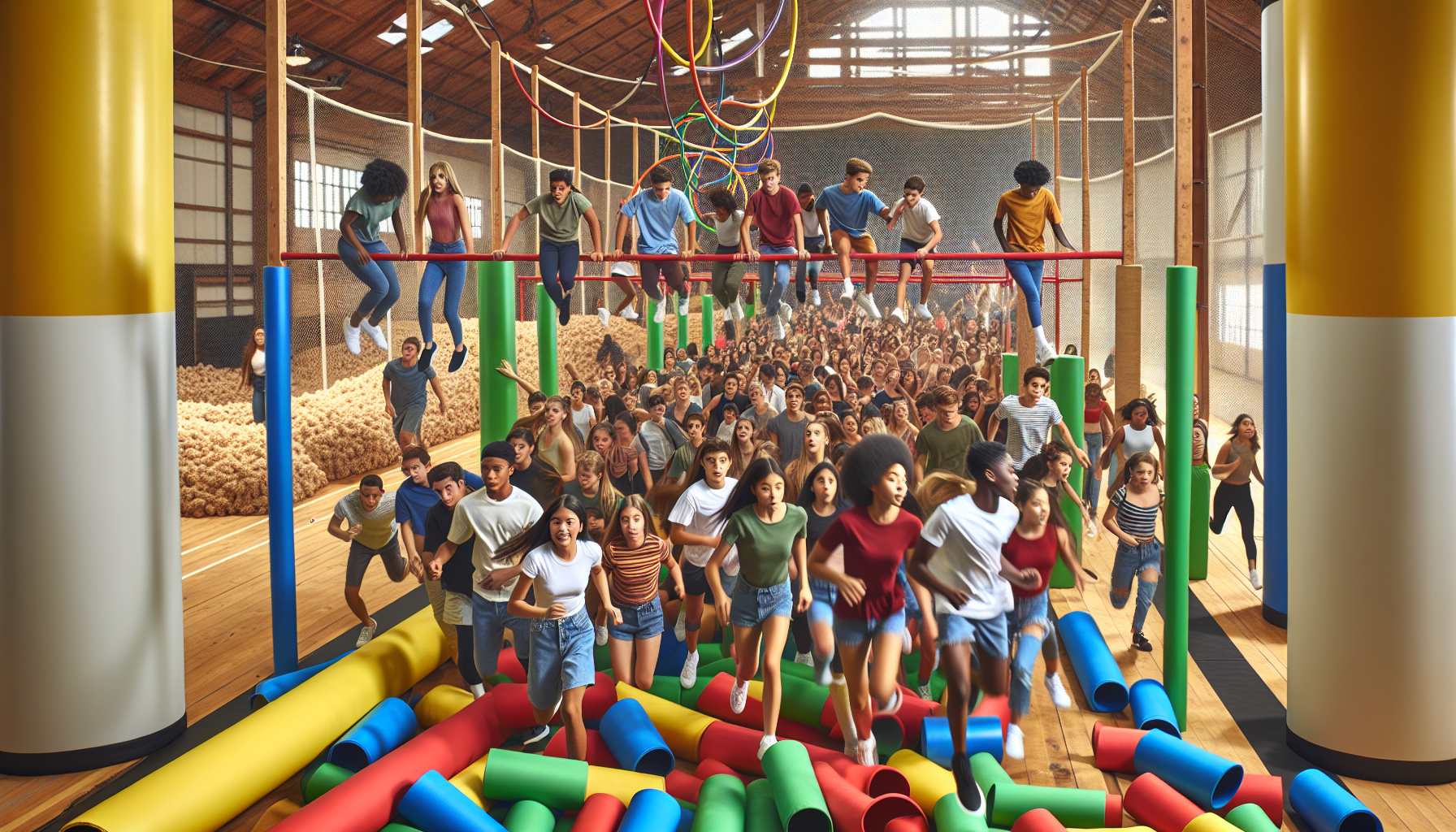
Want to heighten the excitement? Explore the intriguing sphere of obstacle course creations! While designing an indoor obstacle course, safety comes first. We’re talking cushions, yoga mats, blankets for padding, and keeping sharp corners out of the way. But don’t let that deter you from the fun.
Children can be involved in planning their obstacle course, drawing a few ideas from shows like ‘Ninja Warrior’ or social media for inspiration. Imagine having balance beams made with planks or tape, crepe paper laser mazes, and Shark Zone games to challenge students’ agility and coordination.
However, the excitement doesn’t end here. We can introduce the following elements to enhance the obstacle course experience:
- Tunnels made from items like chairs, play mats, pillowcases, or sleeping bags
- Sack races to add an extra challenge
- Simulated ball pit using laundry baskets
- Timers to enhance hand-eye coordination and motivate children to improve their obstacle course performance
What would an obstacle course be without an accompanying storyline? Let’s turn our students into ninjas or pirates, making the course more captivating and imaginative. An obstacle course that’s not just about physical challenges but also about engaging children’s cognitive skills.
Classic Game Reimagined
Occasionally, traditional games can prove to be enjoyable, particularly when revamped with a novel twist. Classic games like dodgeball and tag can be reimagined to introduce new dynamics, promote teamwork, and boost strategic thinking. Take Blob Ball, for example. It’s a dodgeball variant where players form a ‘Blob’ and can throw dodgeballs while linked, creating a unique team dynamic. Doctor Dodgeball introduces a hidden ‘doctor’ who revives eliminated players, adding a layer of mystery and strategy.
Tag games, like the classic tag game, also offer ample room for creativity. In Blob Tag, students expand the Blob by tagging and linking with others, transforming the game into a collective pursuit. Bridge Tag requires tagged players to form a bridge with their bodies, introducing an element of physical creativity.
By reshaping these classic games, we not only make the learning process enjoyable but also instill valuable skills like teamwork, coordination, and strategic thinking in students. After all, PE classes should be just as mentally stimulating as they are physically!
Circuit Training Stations
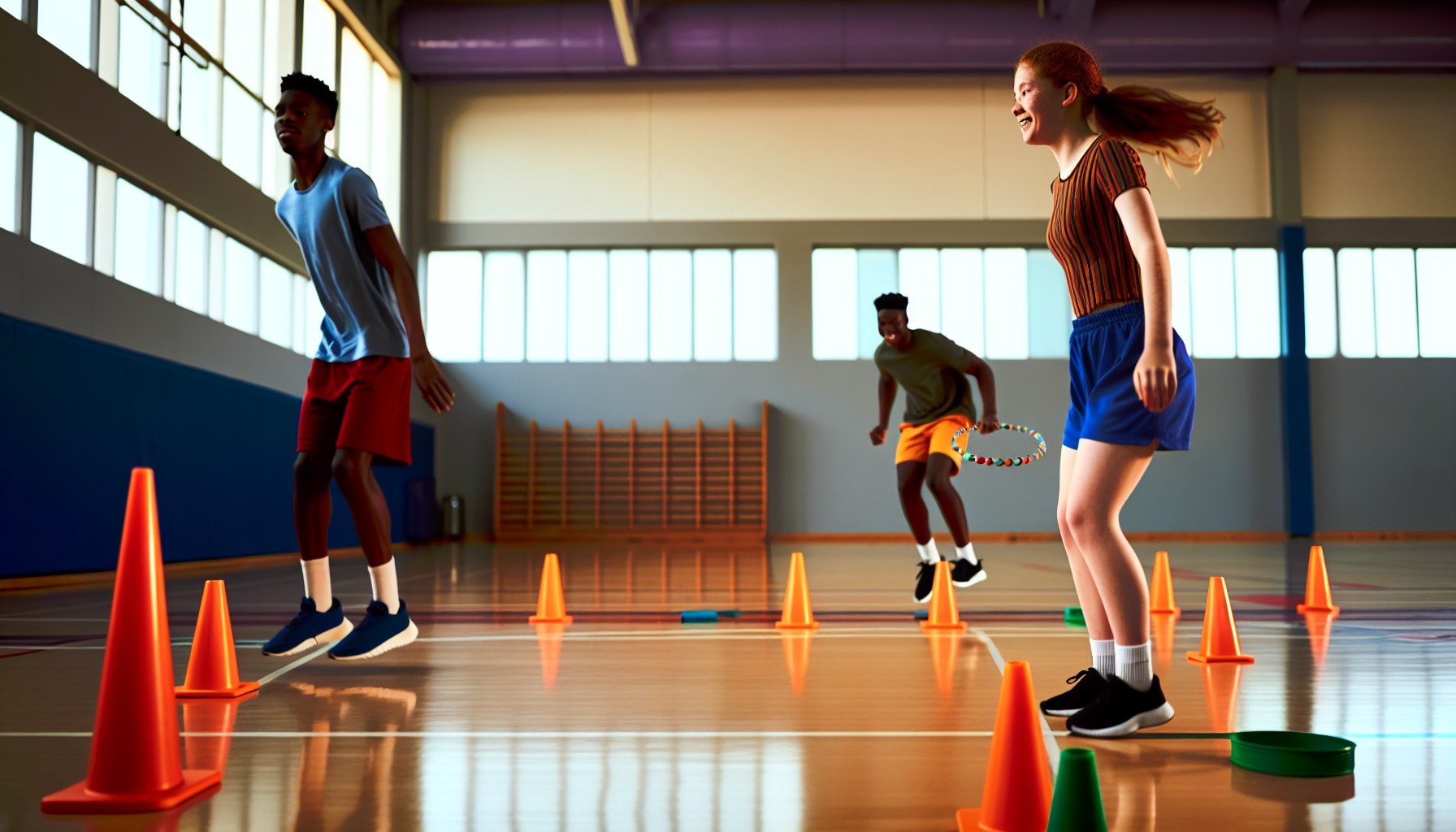
Circuit training stations serve as a smorgasbord of PE exercises, catering to a variety of interests and abilities. They offer a variety of exercises targeting different muscle groups and fitness levels, using equipment like cones, hula hoops, and jump ropes to diversify activities.
Circuit training involves sequences of movements such as jumping, agility ladders, or strength exercises, with each station featuring a distinct activity. Students can work individually, with partners, or in small groups, and circuits can serve as a warm-up, cool-down, or main activity.
Using visual aids like exercise cards or videos can guide students through the circuit and indicate when to change stations. And to maintain student engagement, circuits should feature varied and regularly changing activities and exercises.
The beauty of circuit training lies in its flexibility. It caters to various fitness levels and creates an environment where all students can participate and improve their agility and quickness. Plus, it’s a great way to keep the students active and engaged throughout the class!
Rhythmic Activities for All Ages

Why not infuse our PE classes with a touch of rhythm? Rhythmic activities like musical chairs and line dancing not only promote coordination, balance, and cultural appreciation but also engage students in fun, music-based movement.
Musical chairs can be adapted into a dynamic warm-up activity in PE classes, blending the fun of the game with fitness challenges like:
- lunges
- running backward
- jumping jacks
- high knees
- side shuffles
And for a little extra zing, we can use hula hoops instead of chairs, encouraging creativity in movement and broadening the game for different ages.
Speaking of age, these rhythmic activities cater to children from age three onwards and become more complex to match the abilities of older children around seven and up. The game enhances:
- physical coordination
- social skills
- emotional regulation
- exposes children to diverse cultural music
And let’s not forget line dancing! The Cupid Shuffle, an easily teachable line dance, promotes coordination and is a familiar favorite at social events, making physical activity appealing.
Therefore, it’s time to get our students moving to the rhythm as they play music during their students walk!
Creative Ball Games

Why not kick things off with some inventive ball games? Games like Balloon Tennis, Basketball Court Quests, and Pac-Man Dribble can enhance hand-eye coordination, teamwork, and strategic thinking in a fun and engaging way.
Balloon Tennis is a safe and child-friendly game where participants use makeshift racquets made from paper plates taped to jumbo popsicle sticks, and a balloon serves as the ball. The game can be diversified with games like Down On One Knee, Smash Down, and Keepy Uppy, each promoting skills such as balance, quick reflexes, and hand-eye coordination.
Basketball Court Quests include shooting and dribbling activities progressing through 9 skill levels to cater to different student abilities, and can be combined with throwing and catching exercises for enhanced skill development.
These games aren’t just about the fun; they’re about teaching students valuable skills while ensuring they’re having a great time playing an enjoyable game. After all, learning is always more effective when it’s enjoyable!
Solo Exercise Endeavors
While group activities effectively encourage teamwork and cooperation, solo exercises have a charm of their own. They allow students to focus on individual progress and self-motivation while honing personal growth and skills.
Take the ‘Whirlwind Challenge,’ for example. It’s a jump rope game that promotes continuous movement and skill enhancement, as eliminated players practice until a timer runs out. And then there’s the ‘Pac-Man Dribble’ exercise that adapts the concept of the video game into a physical activity where players dribble a basketball along gymnasium lines, avoiding being tagged by the ‘Pac-Man’.
These solo exercises encourage students to challenge themselves at their own pace, allowing them to focus on their own progress. After all, every student is unique, and solo exercises provide an opportunity for them to shine in their own light!
Parachute Playtime
Whoever said that parachutes were solely meant for skydiving? Parachute playtime activities like Little Waves, Big Waves, and NASCAR engage students in cooperative play, promoting teamwork, coordination, and quick reaction time.
Activities like ‘Little Waves’ and ‘Big Waves’ teach students coordination by practicing hand movements to create various wave sizes. ‘Travel with the Parachute’ promotes teamwork by requiring all students to move in the same direction and then reverse while holding the parachute.
Dynamic activities like ‘NASCAR’ combine the formation of a parachute tent with movement around the parachute aiming to return to the original spot before it falls. In this game, two teams can compete against each other to make it more exciting. And games like ‘Color Center’ involve students switching places based on the color called out, integrating quick reaction time with fun.
Parachute games not only provide a fun change of pace but also foster vital skills such as teamwork, coordination, and quick reflexes. Plus, they’re a great way to add a touch of adventure and parachute fun to the PE class!
No-Equipment Necessary
At times, a dash of creativity is all it takes to make a PE class enjoyable. No-equipment necessary games like The Floor is Lava, Shadow Tag, and Fitness Charades promote agility, quick decision-making, and physical activity without the need for special equipment.
‘The Floor is Lava’ involves students imagining the gym floor as lava, and they must hop between safe spots like cushions or mats when the music stops, promoting agility and quick decision-making. Shadow Tag, a version of tag played without any equipment, encourages kids to step on each other’s shadows, promoting speed and agility in an engaging way.
Fitness Charades, adapted from Survivor Tag, enables students to act out different sports or exercises and gets them moving without the need for any props or equipment. These games are not only cost-effective but also incredibly fun and engaging. After all, creativity is the best tool we have!
Cool-Down and Reflection
After an exhilarating PE class, a cool-down period and some reflection are in order. Cool-down exercises help prevent lightheadedness or dizziness by allowing blood flow to return to normal and reduce muscle soreness by flushing out lactic acid buildup.
Gentle yoga poses that enhance relaxation and alignment post-exercise include:
- Supine Spinal Twist
- Happy Baby Pose
- Legs Up the Wall Pose
- Corpse Pose
- Easy Pose
Activities like Pigeon Pose and Supported Bridge Pose can specifically target hip flexors and the spine, increasing mobility after vigorous PE activities.
Additionally, we should never overlook the significance of reflection. A group discussion to reflect on their experiences and learnings from the class can be an excellent way for students to share their thoughts and feedback. It’s a chance for them to express what they enjoyed, what they found challenging, and what they look forward to in future PE classes.
Summary
We’ve journeyed through a host of engaging and innovative PE exercises, from energizing warm-up routines to creative ball games, rhythmic activities, parachute playtime, and even no-equipment necessary games. These activities are not only fun but also enhance students’ agility, coordination, teamwork, and strategic thinking. So, let’s keep the spirit of innovation alive in our PE classes, ensuring that every class is a journey of exploration, fun, and learning!
Frequently Asked Questions
What do elementary students learn in PE?
In elementary PE, students learn fundamental skills like running, jumping, and throwing, which prepare them for success in middle and high school PE classes. These skills include locomotor, non-locomotor, and manipulative skills.
How to do PE in a classroom?
You can do PE in a classroom by playing games that require minimal equipment, such as a scrunched up piece of paper. Have fun!
Why are warm-up routines important in PE classes?
Warm-up routines are important in PE classes because they prepare students physically and mentally for the activities ahead, enhance agility, and get students excited for the class. So, it’s important to always start with a good warm-up.
How can classic games be reimagined for PE classes?
You can reimagine classic games for PE classes by adding innovative twists that promote teamwork and strategic thinking. For instance, try turning dodgeball into Blob Ball, where players link up and throw dodgeballs as a team.
Share this post: on Twitter on Facebook on Google+


